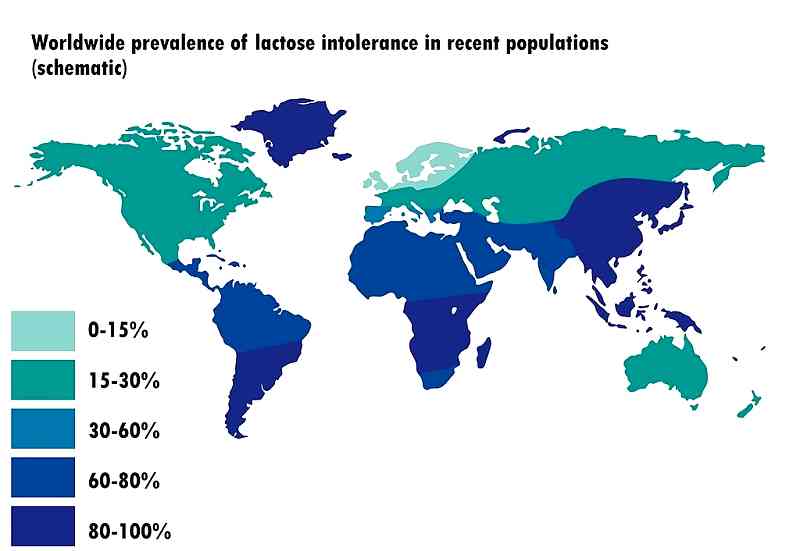Why Asians Are More Likely to Be Lactose Intolerant Than Others


By Ryan General
March 1, 2019
For most Asians, lactose intolerance is something we just have to live with.
Embedded in our DNA is our propensity to rush to the nearest restroom after enjoying some dairy products. This unfortunate predisposition to uncontrollable flatulence and watery diarrhea due to lactose intolerance has become a mystery to many who remember being able to easily digest milk when they were younger.
According to internal medicine specialist Dr. Sean Chung, the ability to digest lactose (the sugar found in mammalian milk) is a feature nearly every human child possesses.
Most children (of all races) use the lactase enzymes in the small intestines to break down countless lactose molecules into glucose and galactose, making them easier to absorb by the gut lining.
As with other mammals, lactase persistence is important in humans during childhood, especially during breastfeeding years, to be able to digest milk produced by mothers.
“Some of us will experience a drastic decrease in the amount of this enzyme, often around age 5,” the Southern California physician explained. “This reduction is known as lactase non-persistence. If the lactose isn’t reduced for absorption, it remains in the intestines, pulling in water from the rest of the body and being converted by our intestinal bacteria into unpleasant stuff, including lots of hydrogen gas.”
In fact, all humans in early civilizations become lactose intolerant after the weaning years. It was only during the invention of agriculture some thousands of years ago that allowed cultures in the Western hemisphere to eventually develop lactase persistence. Humans evolved as a new source of lactose other than breast milk became available through the domestication of animals.
It has been explained from an evolutionary perspective that some countries have developed better genetic makeup for tolerating lactose than others simply because they consume more milk.
Compared to the countries which benefit more from sunlight by being near the equator, northern European countries needed to consume more milk to obtain more calcium since they lack Vitamin D from the sun.

This is why lactose intolerance rates among northern Europeans can go as low as 5% of adults while in some Asian communities, it can go as high as over 90%.
In this lactose-filled world we live in, Chung noted that there is still hope for the lactose intolerant.
“You can consume just small amounts of dairy at a time. You can veer toward cheese and yogurt, which tend to contain less lactose than milk,” he advised.
There are also over-the-counter lactase enzymes available that can be consumed along with any dairy item. He also suggested buying milk pretreated with lactase that has broken down lactose into its constituent sugars for those who really love milk.
Share this Article
Share this Article